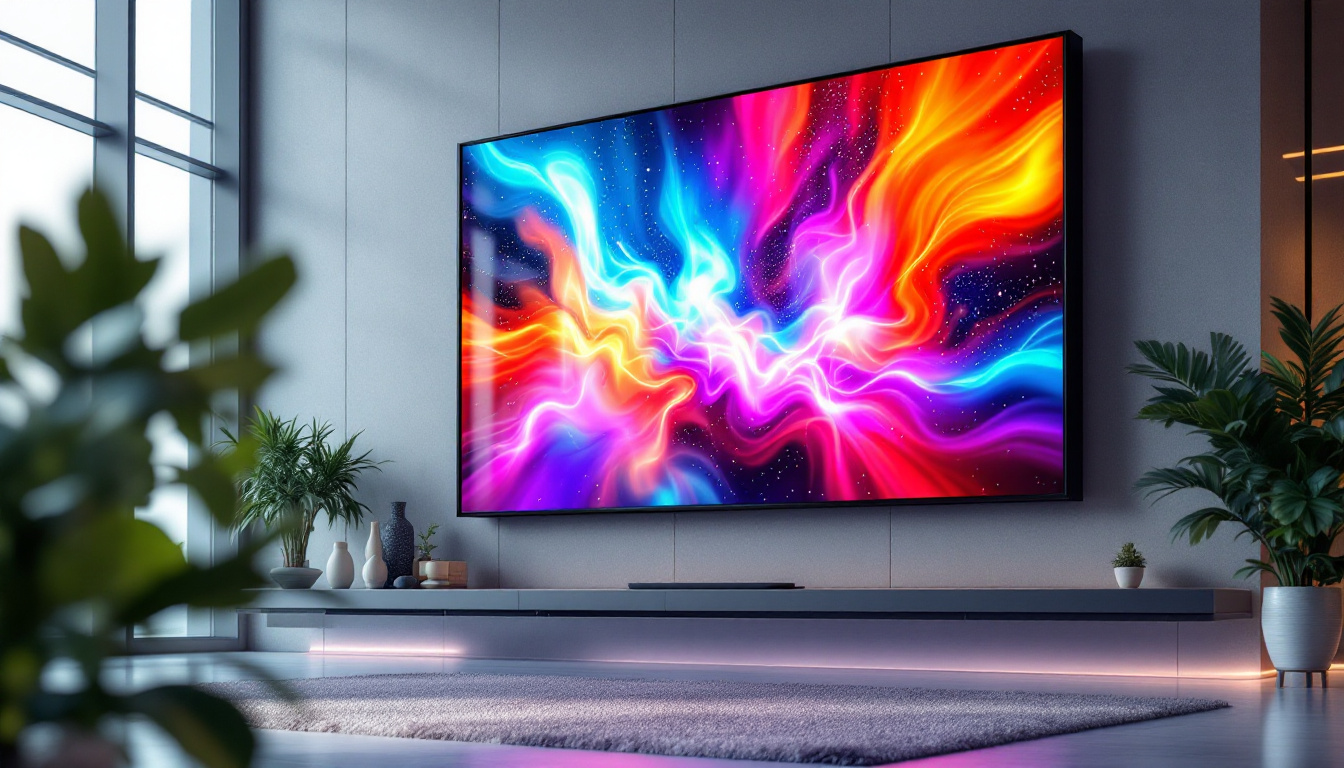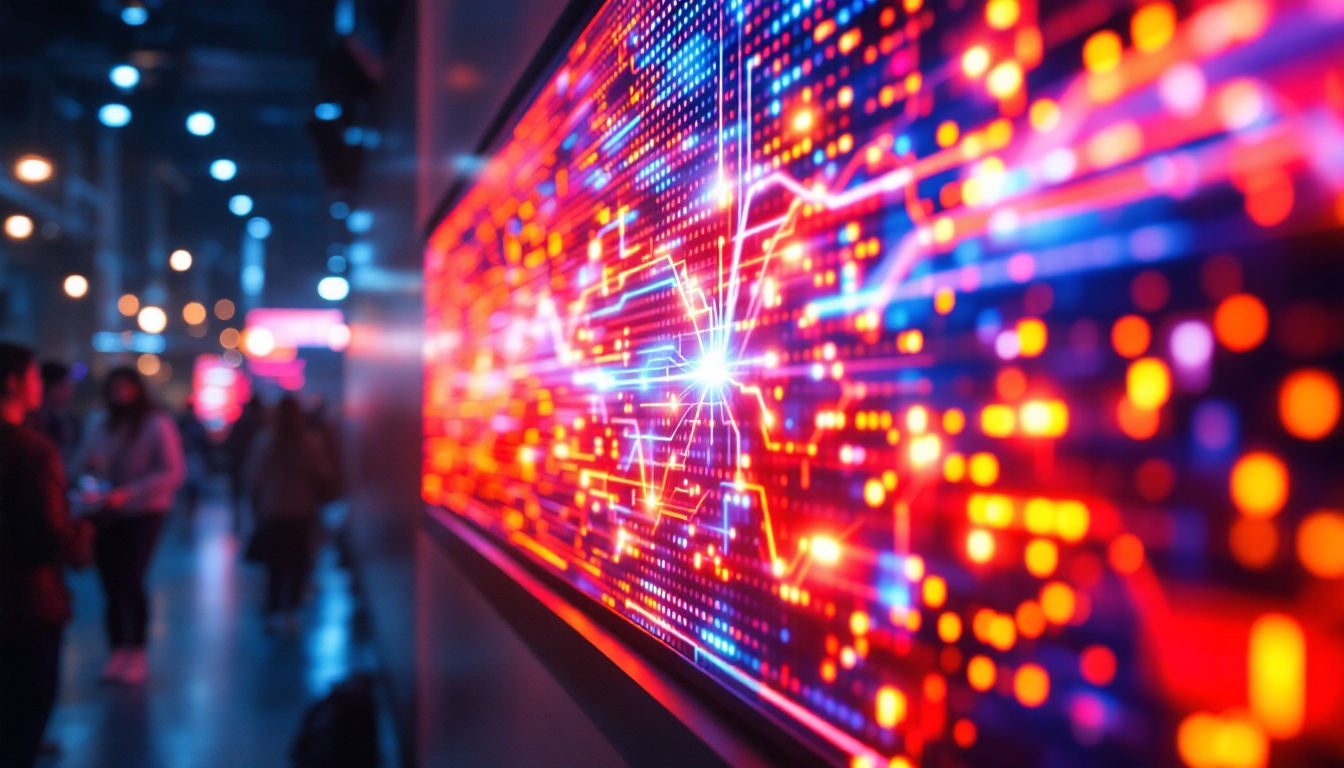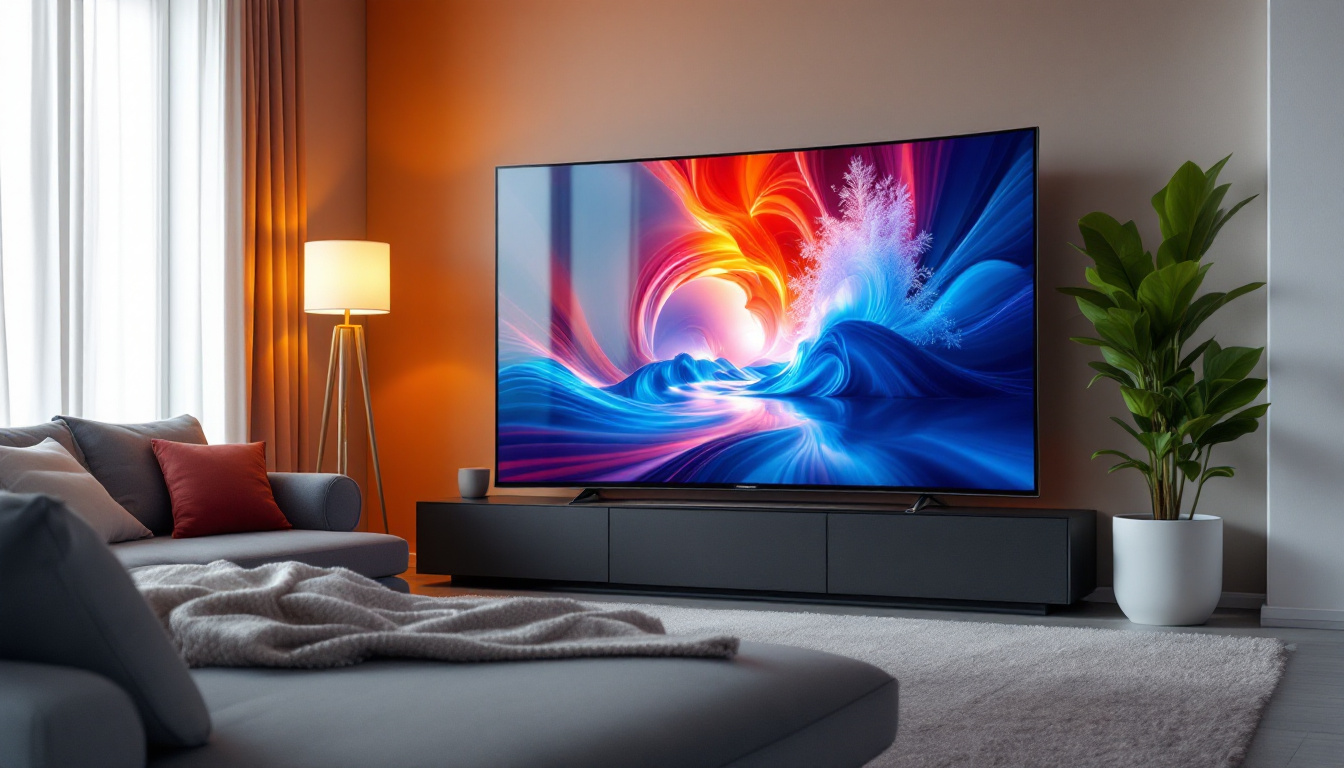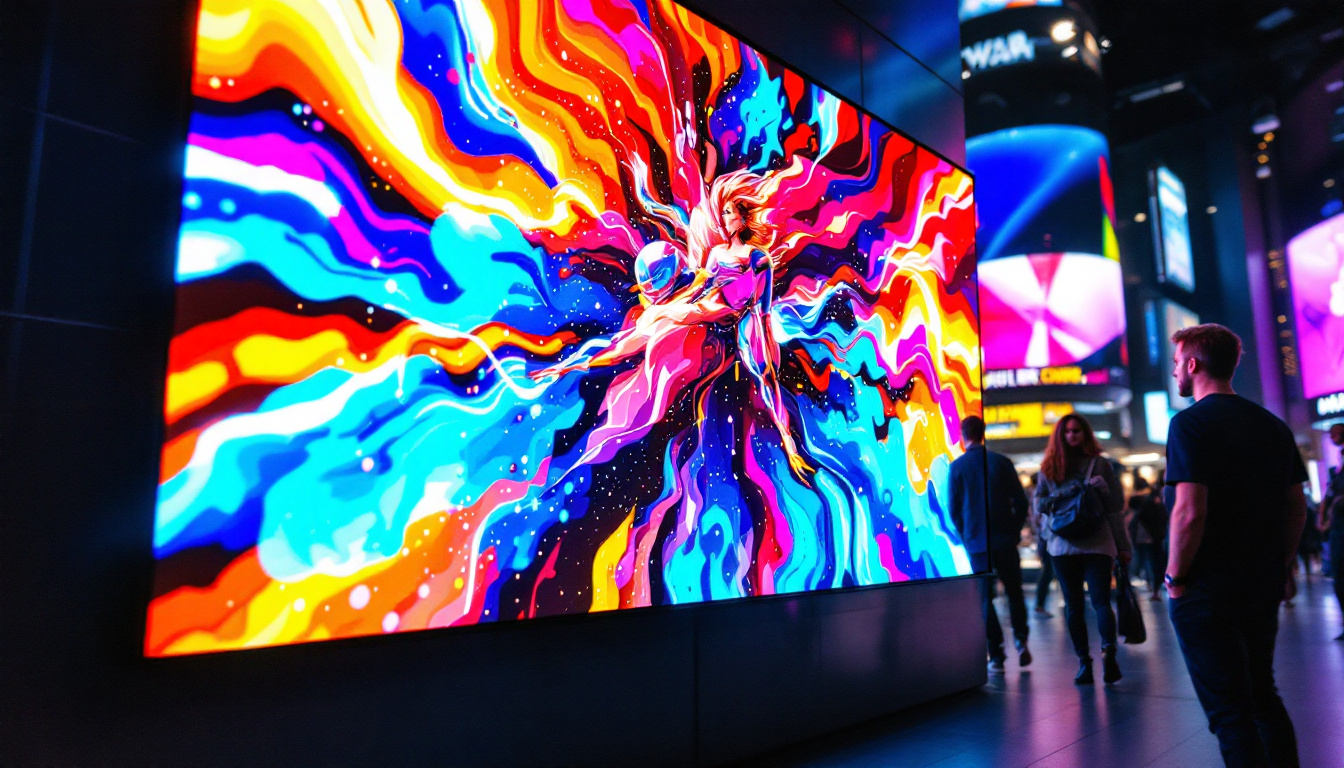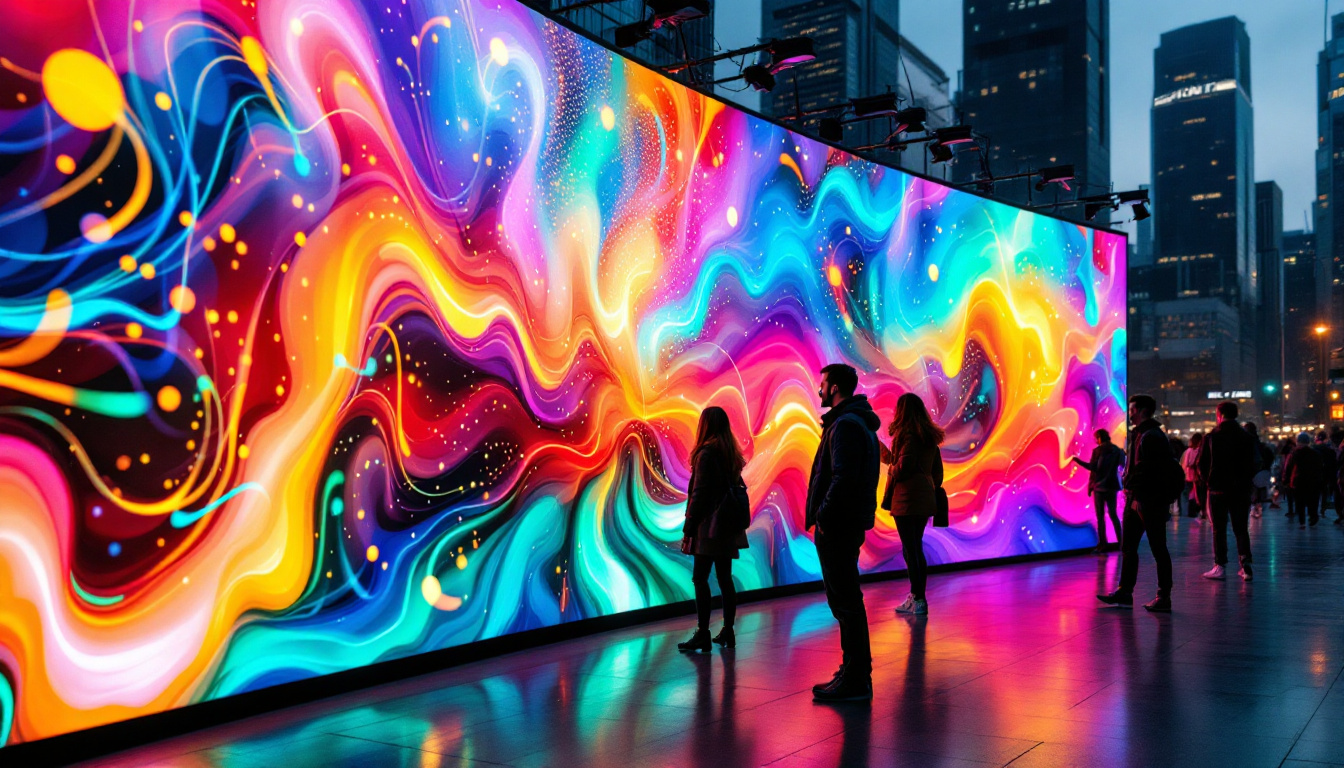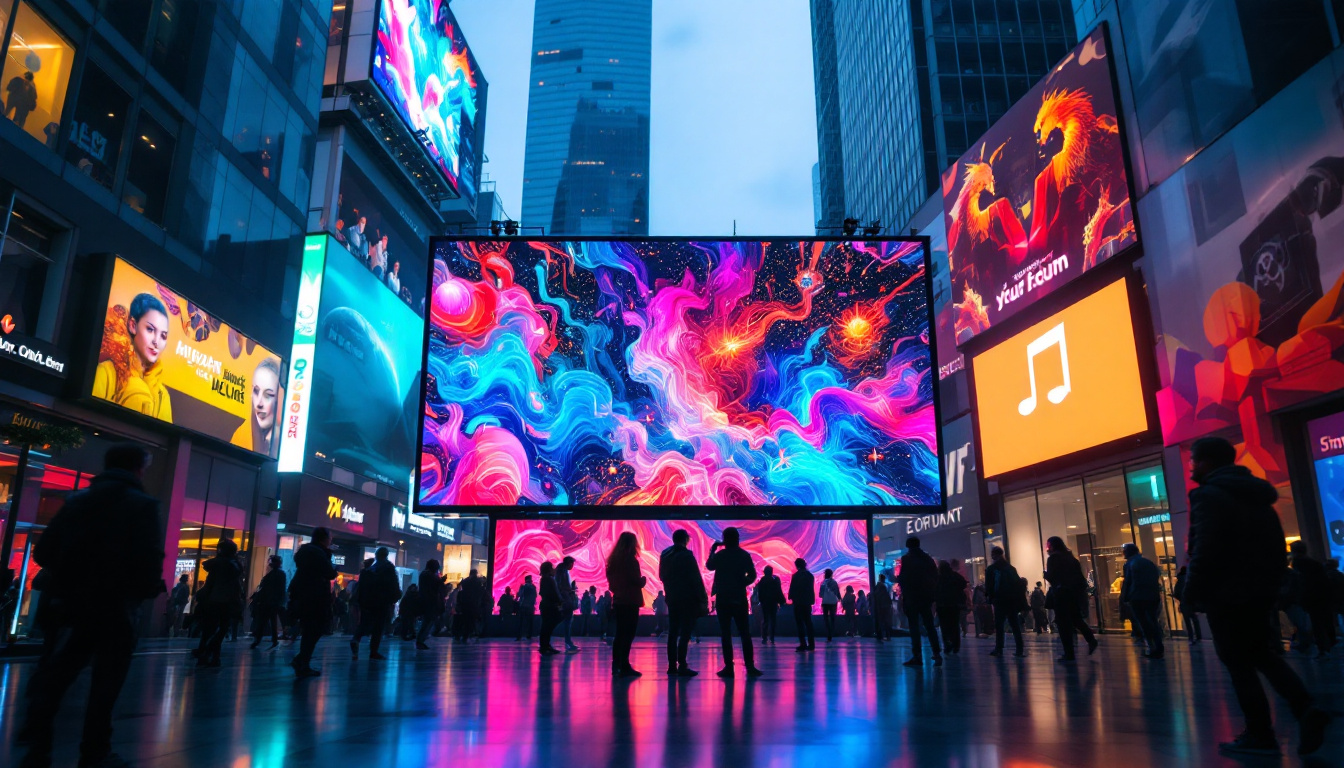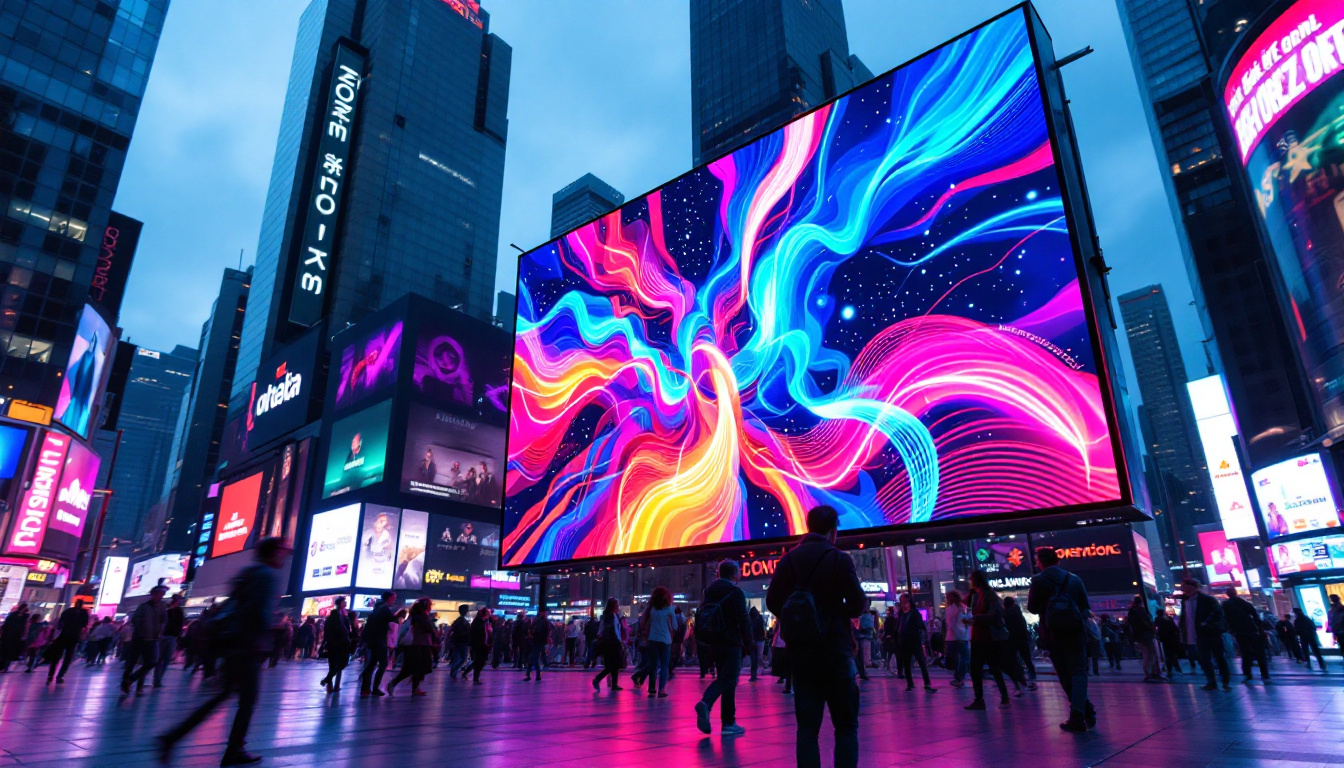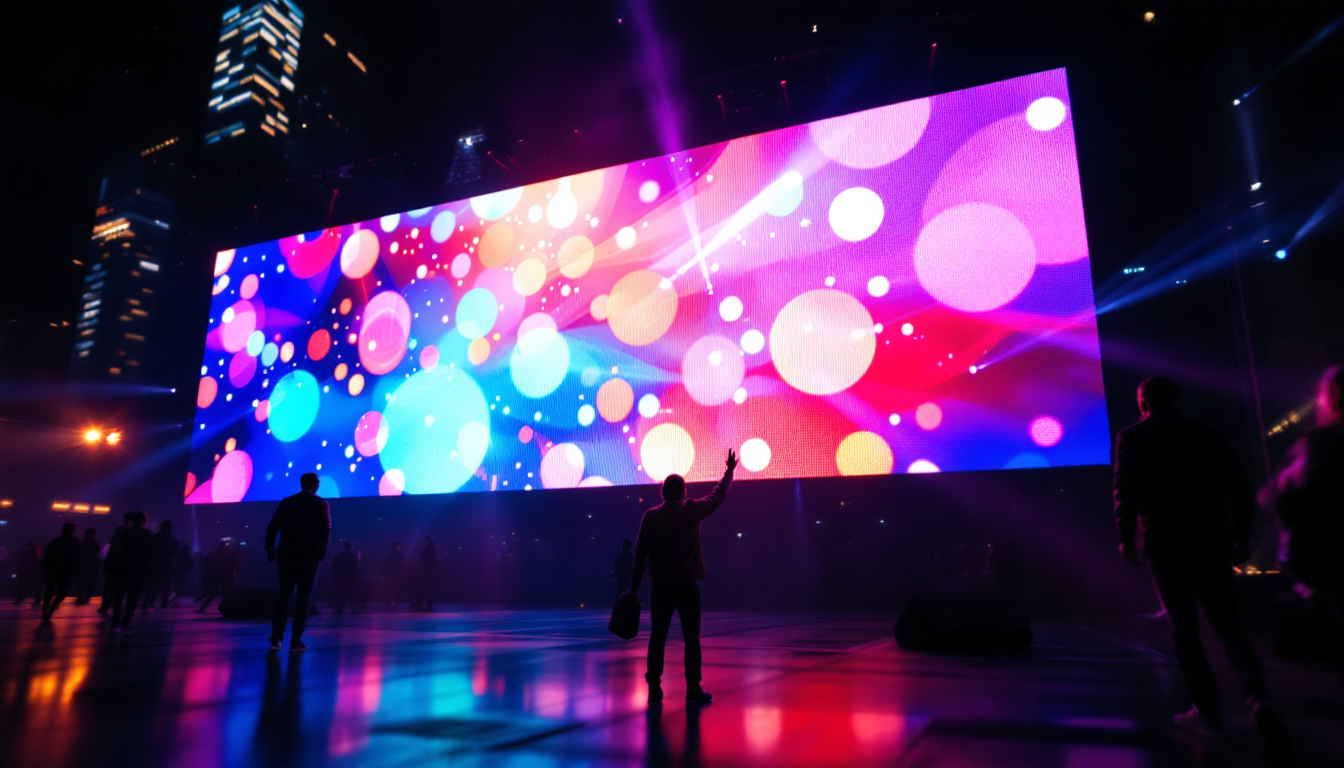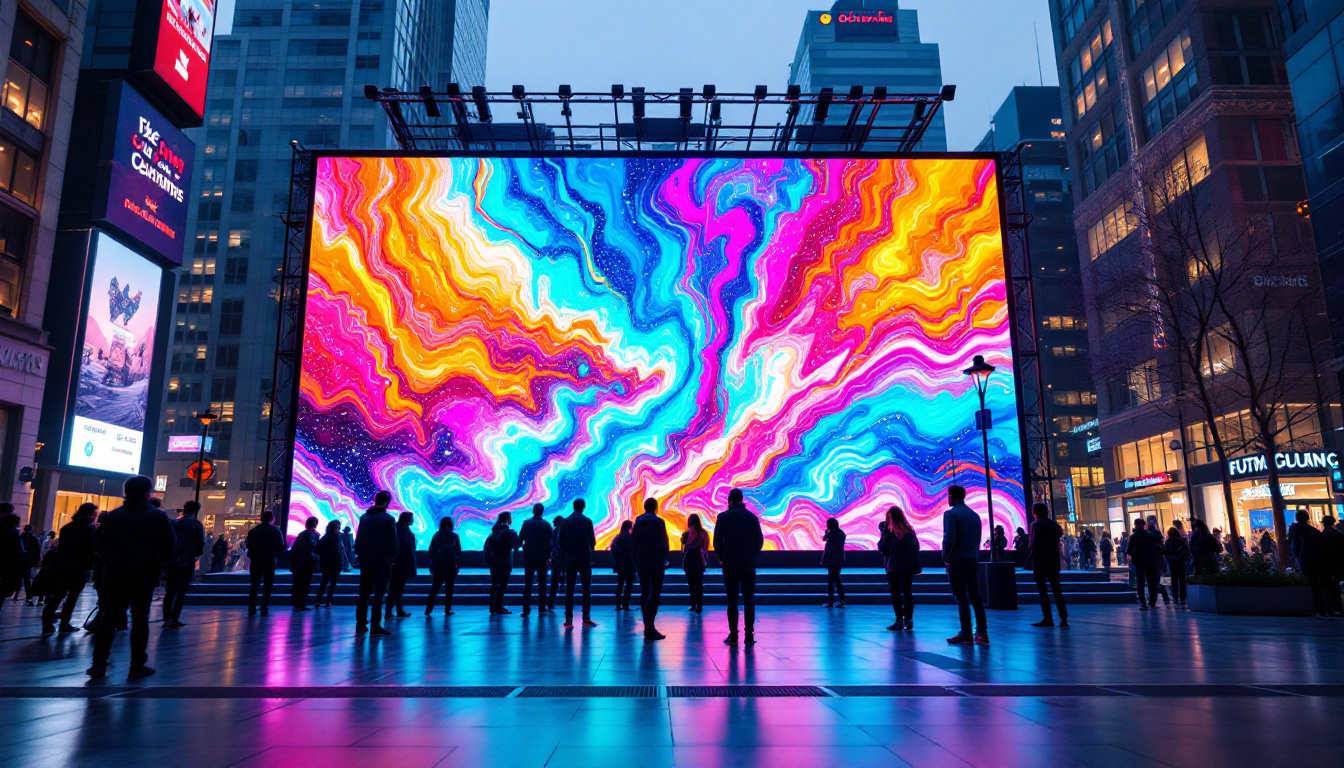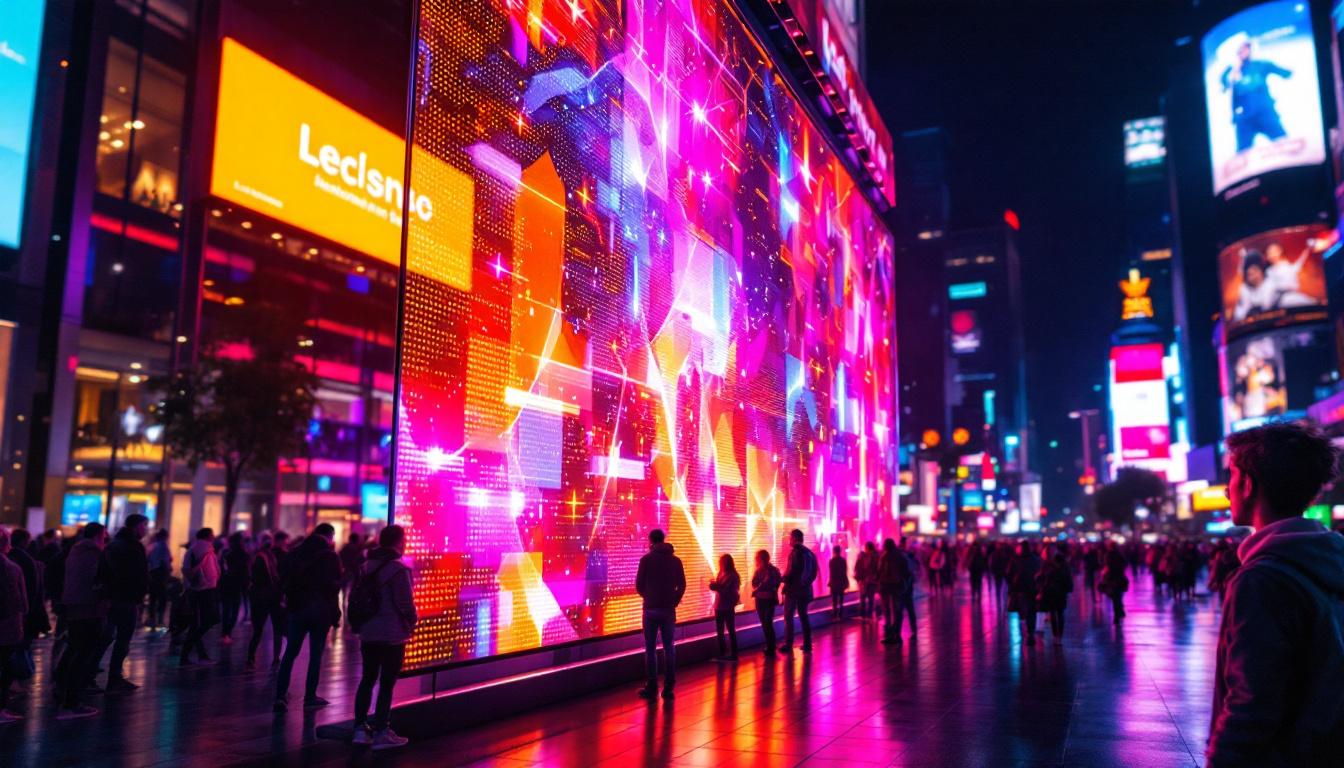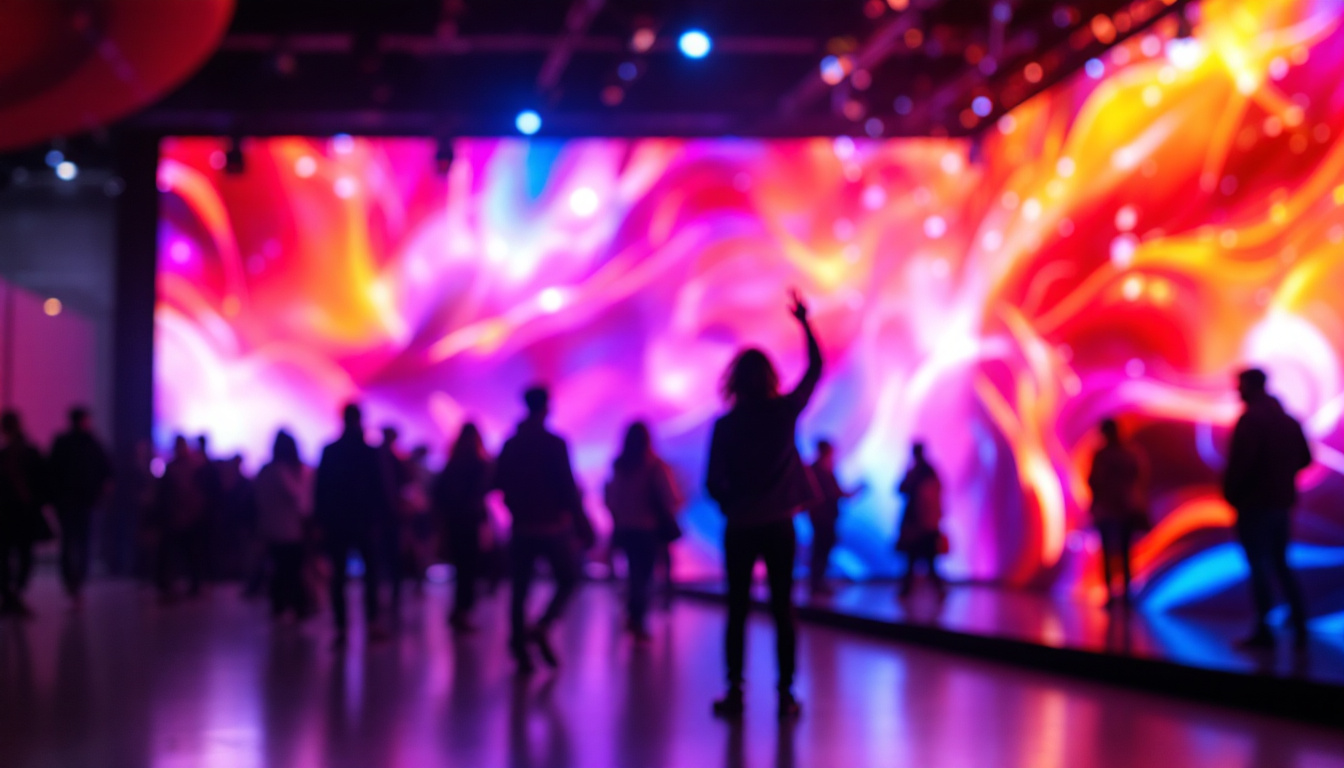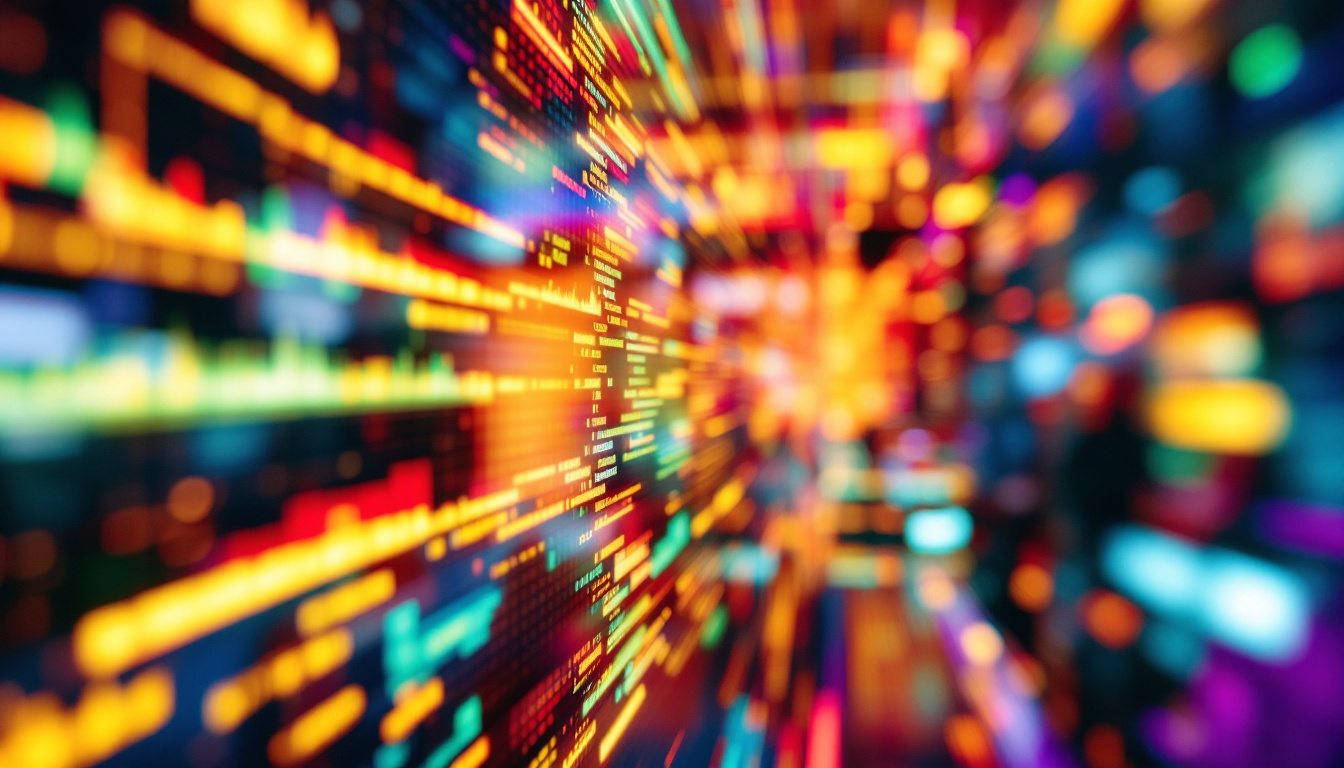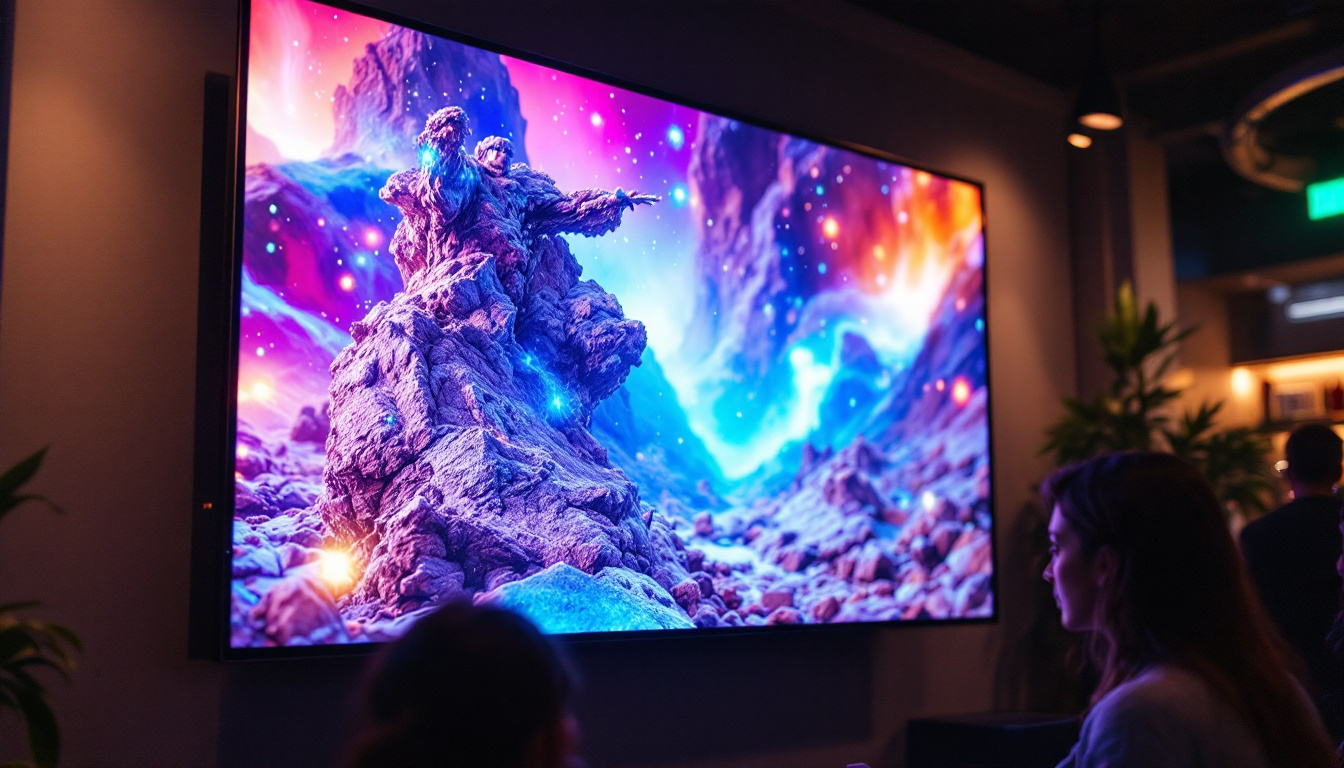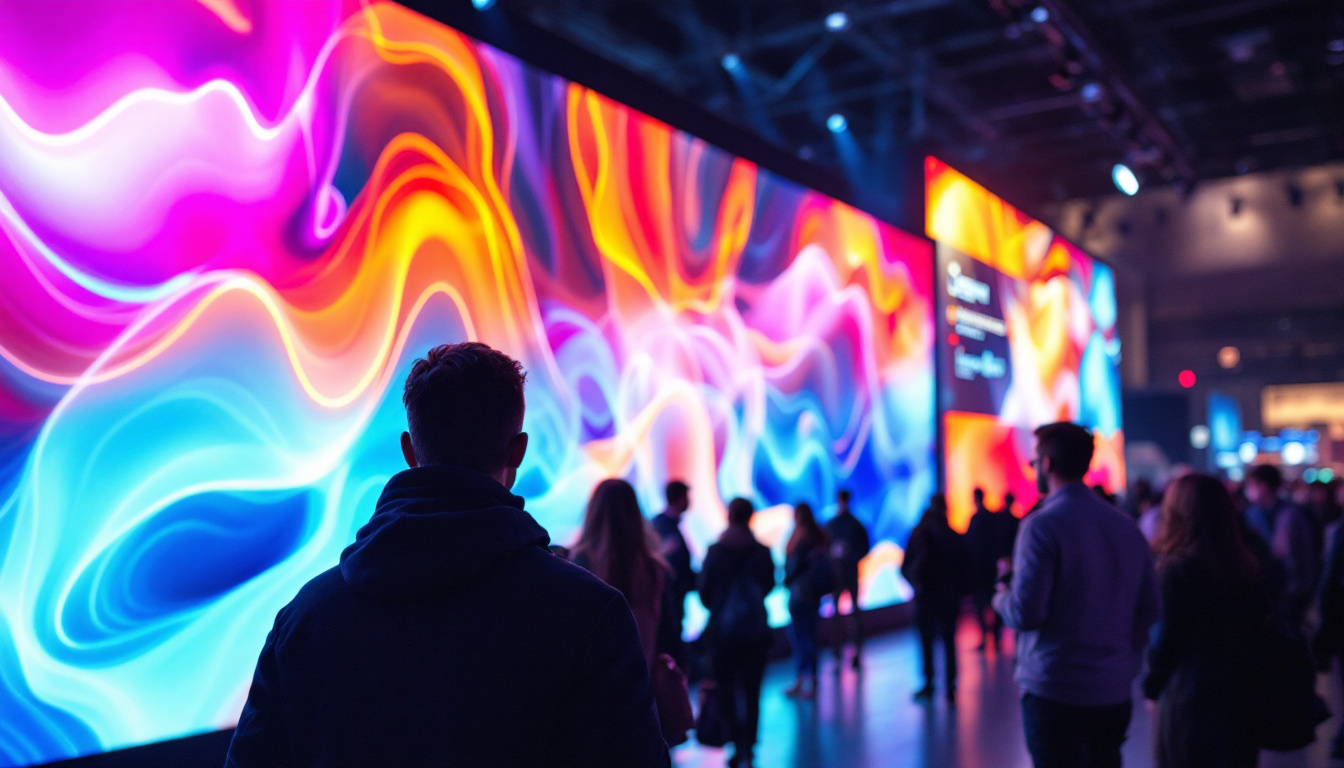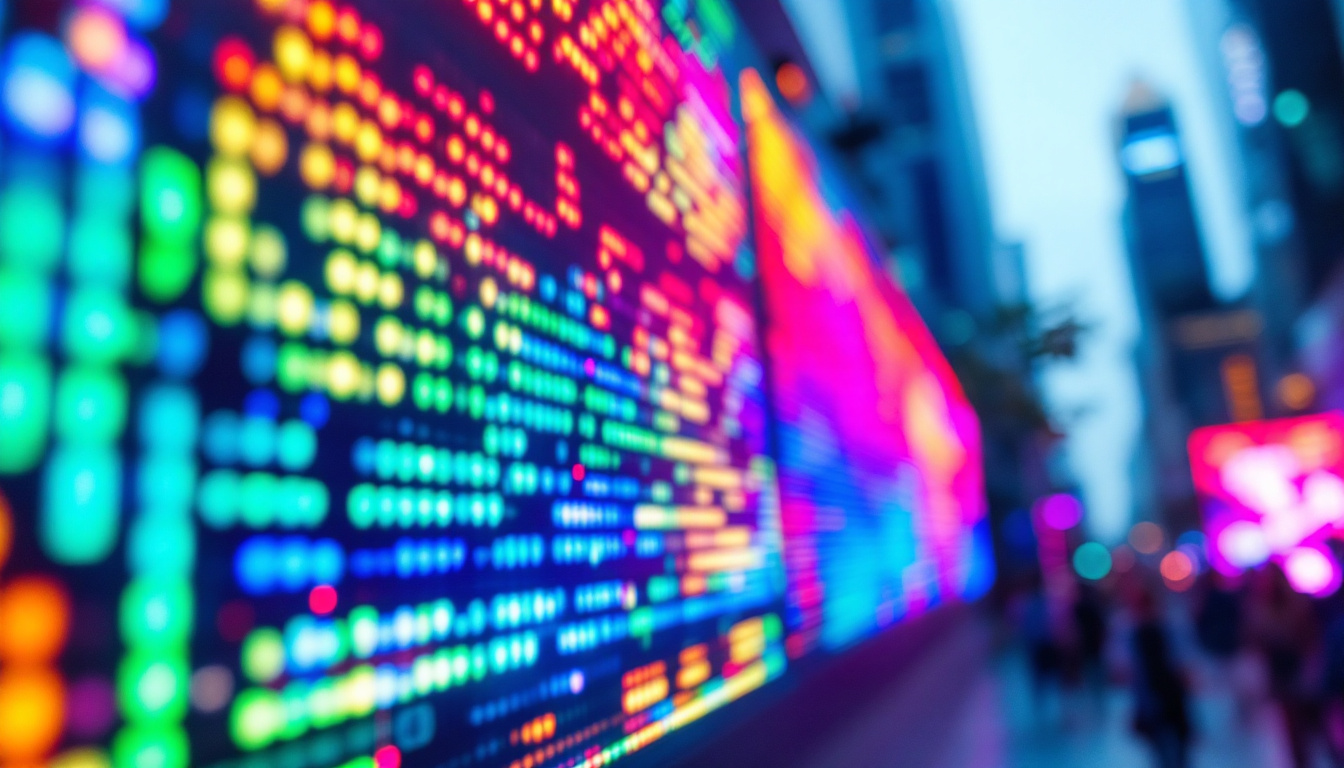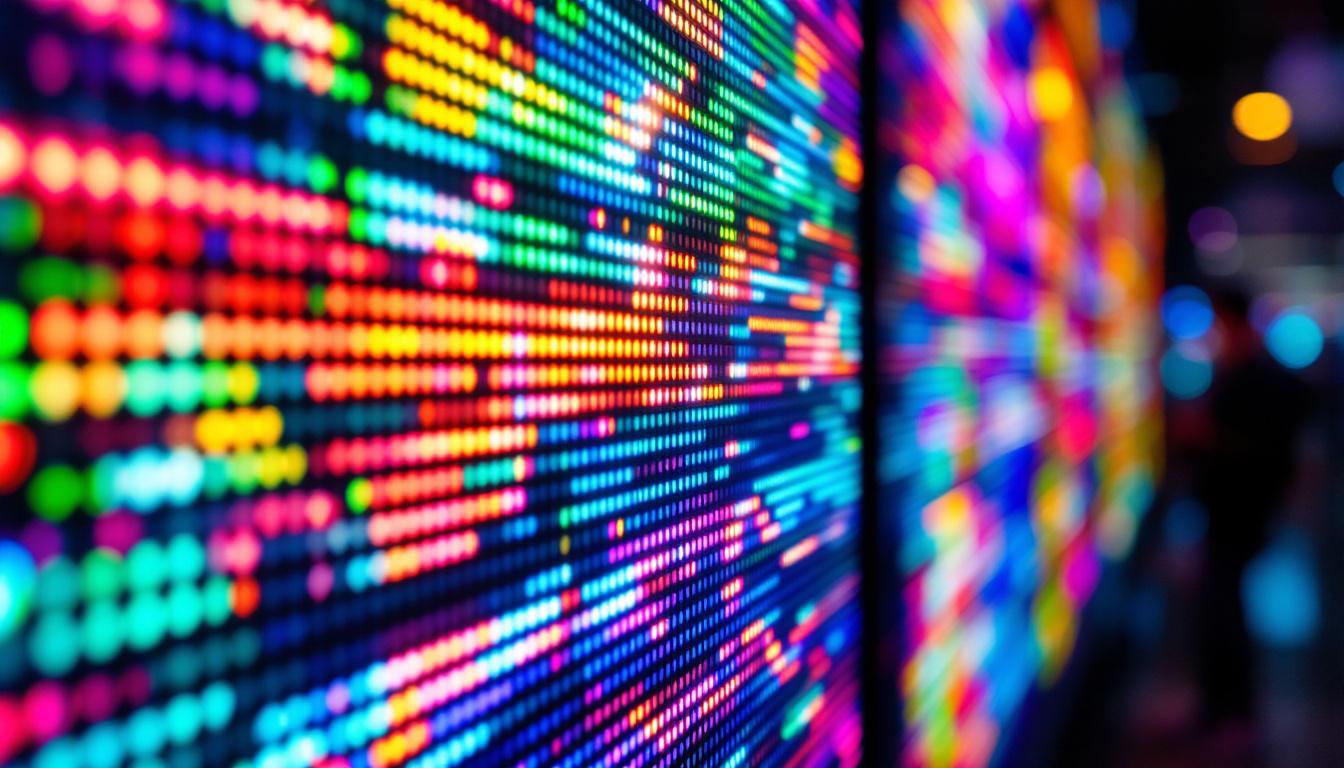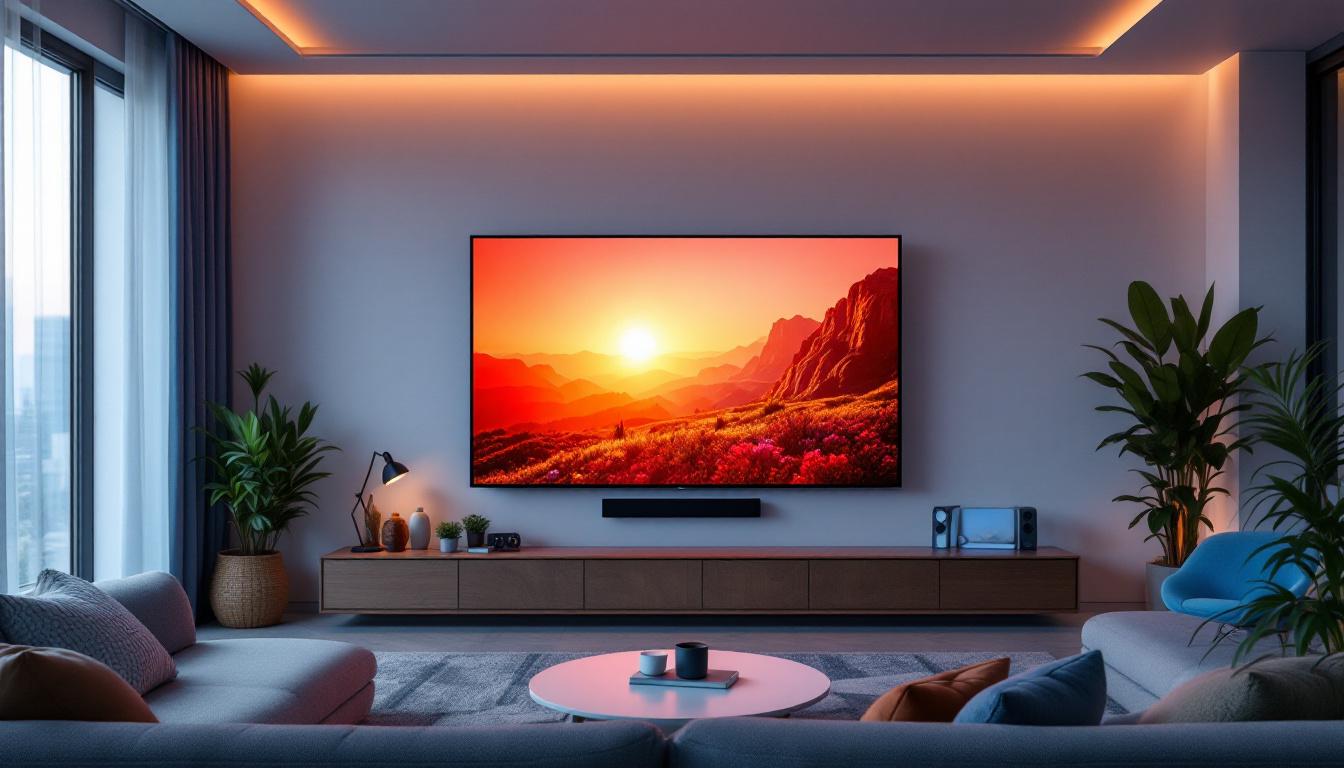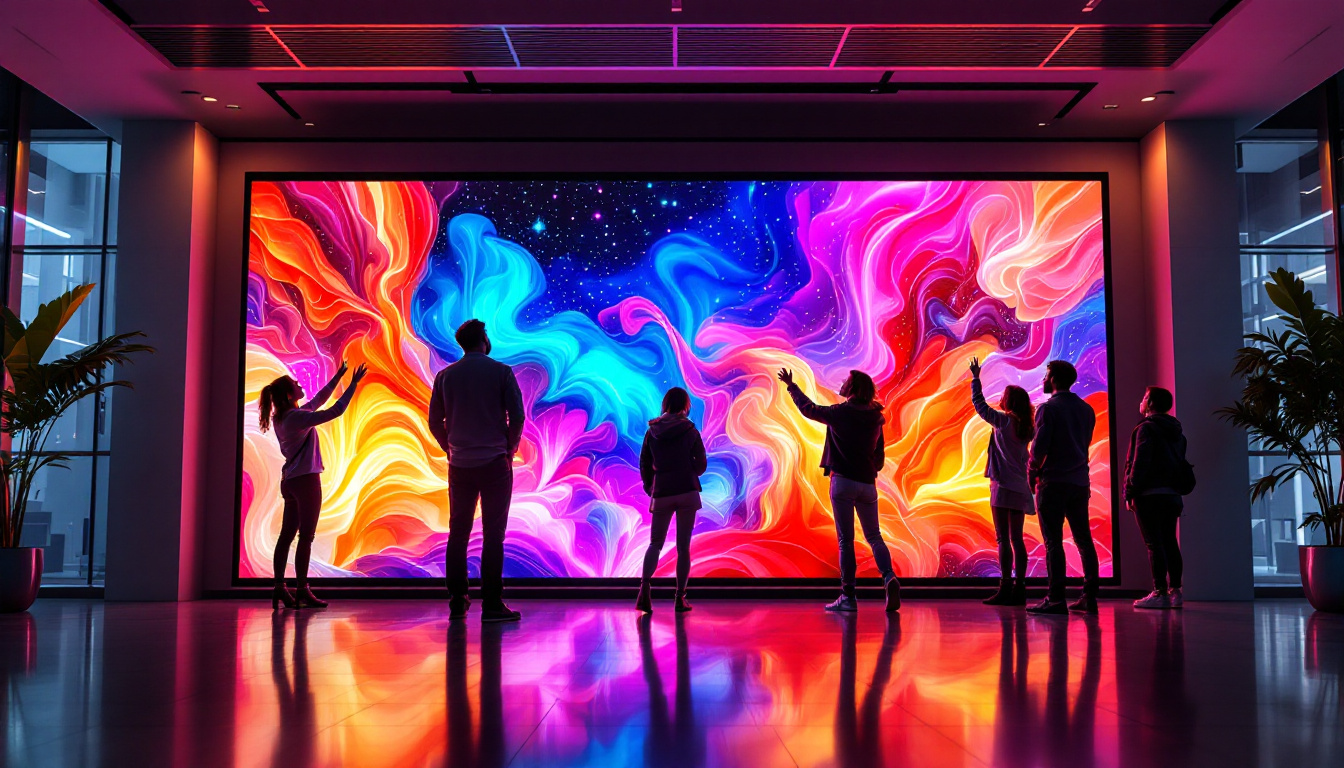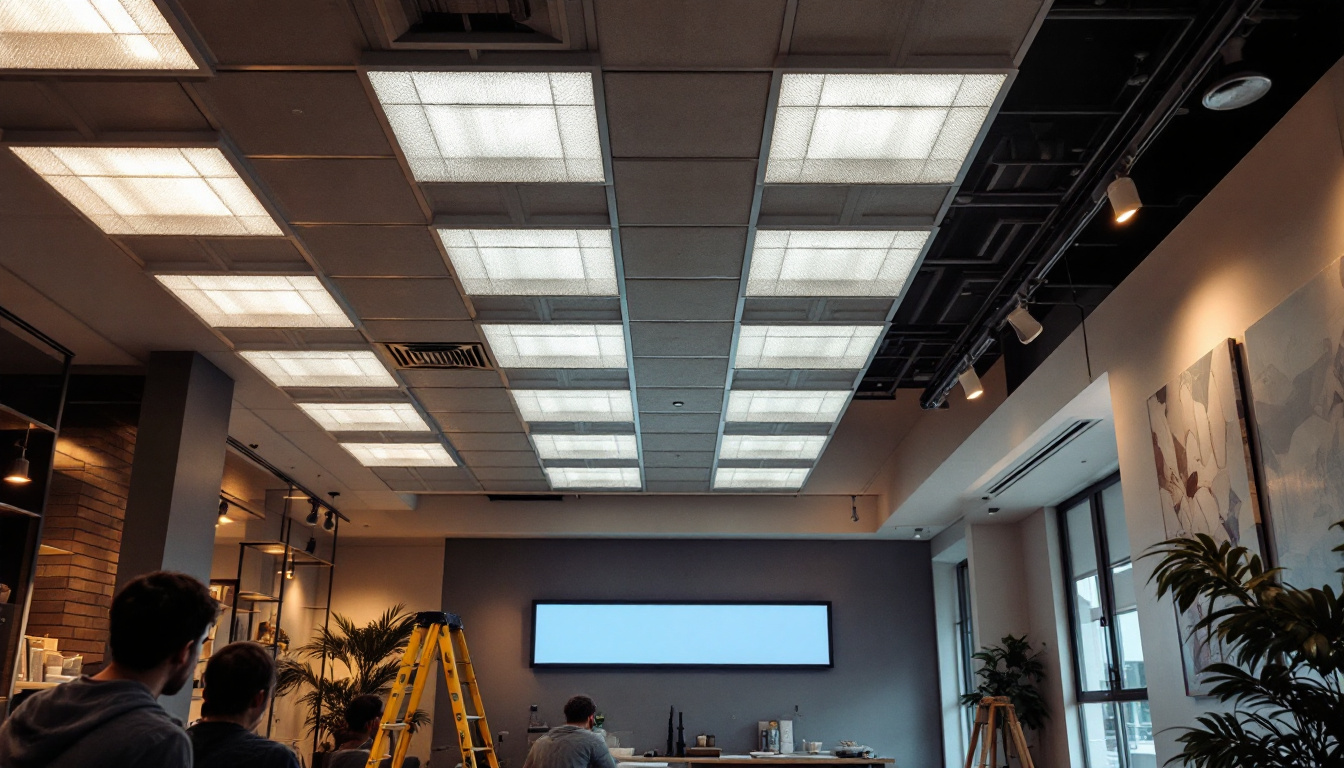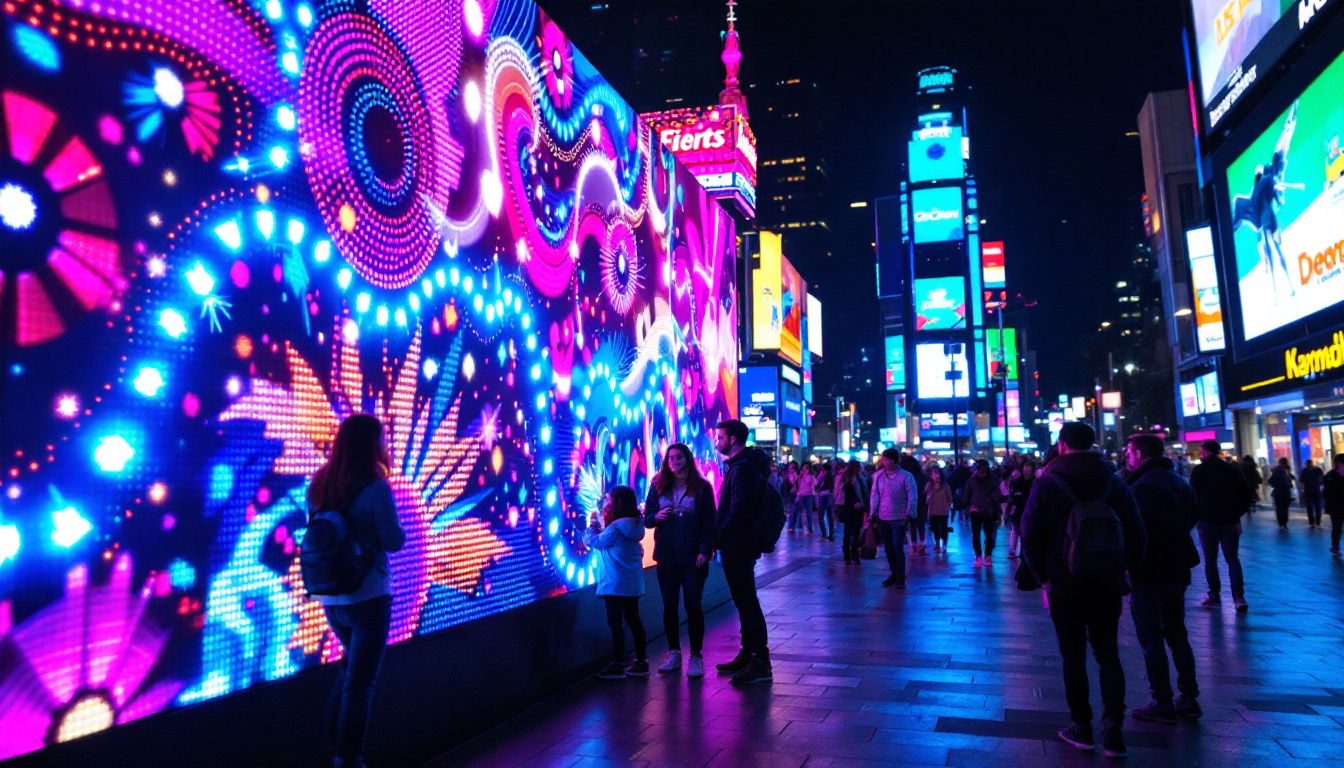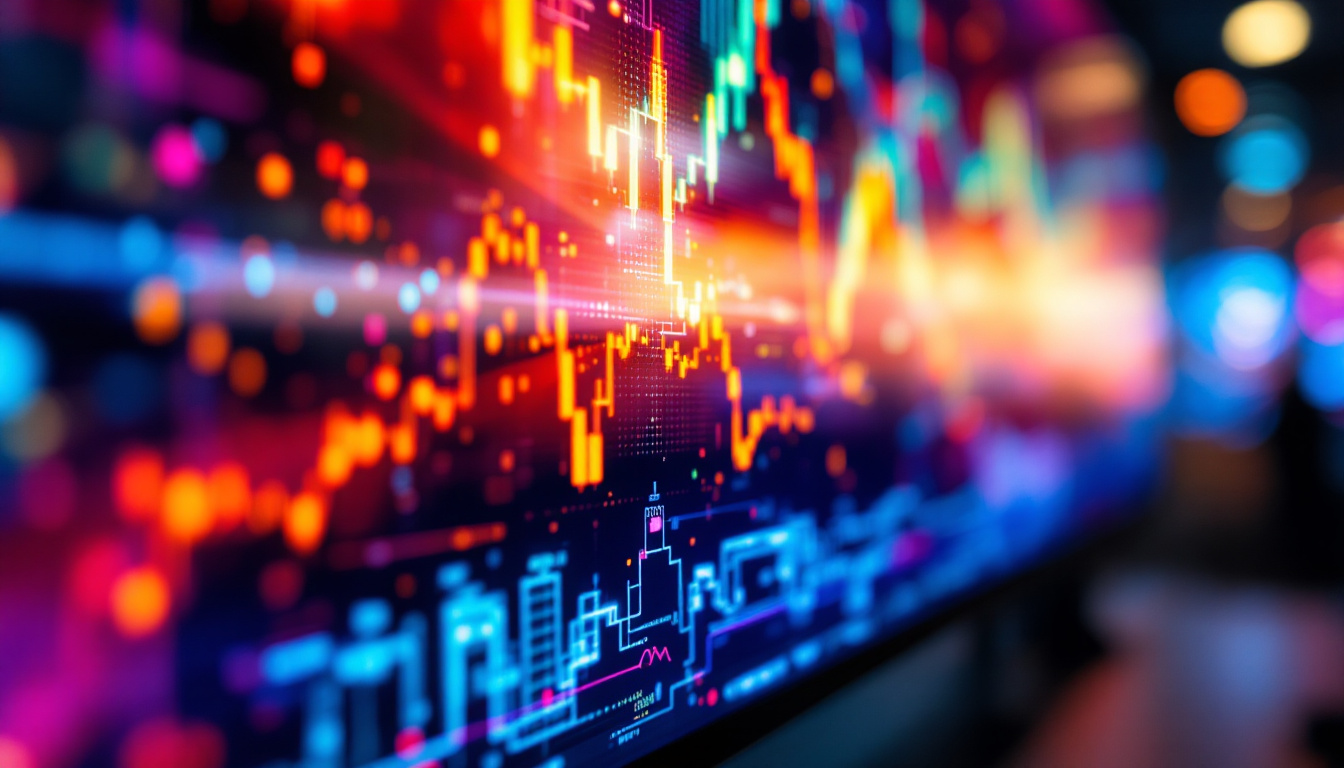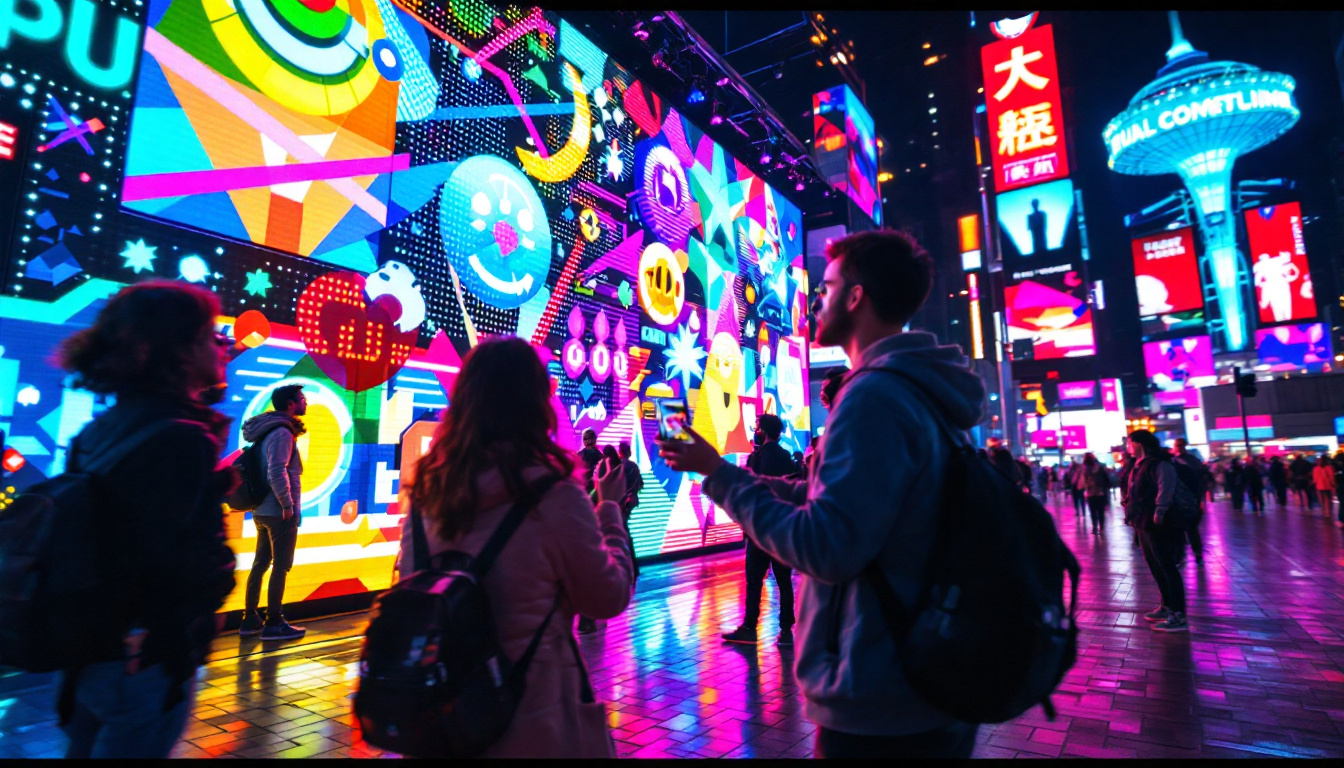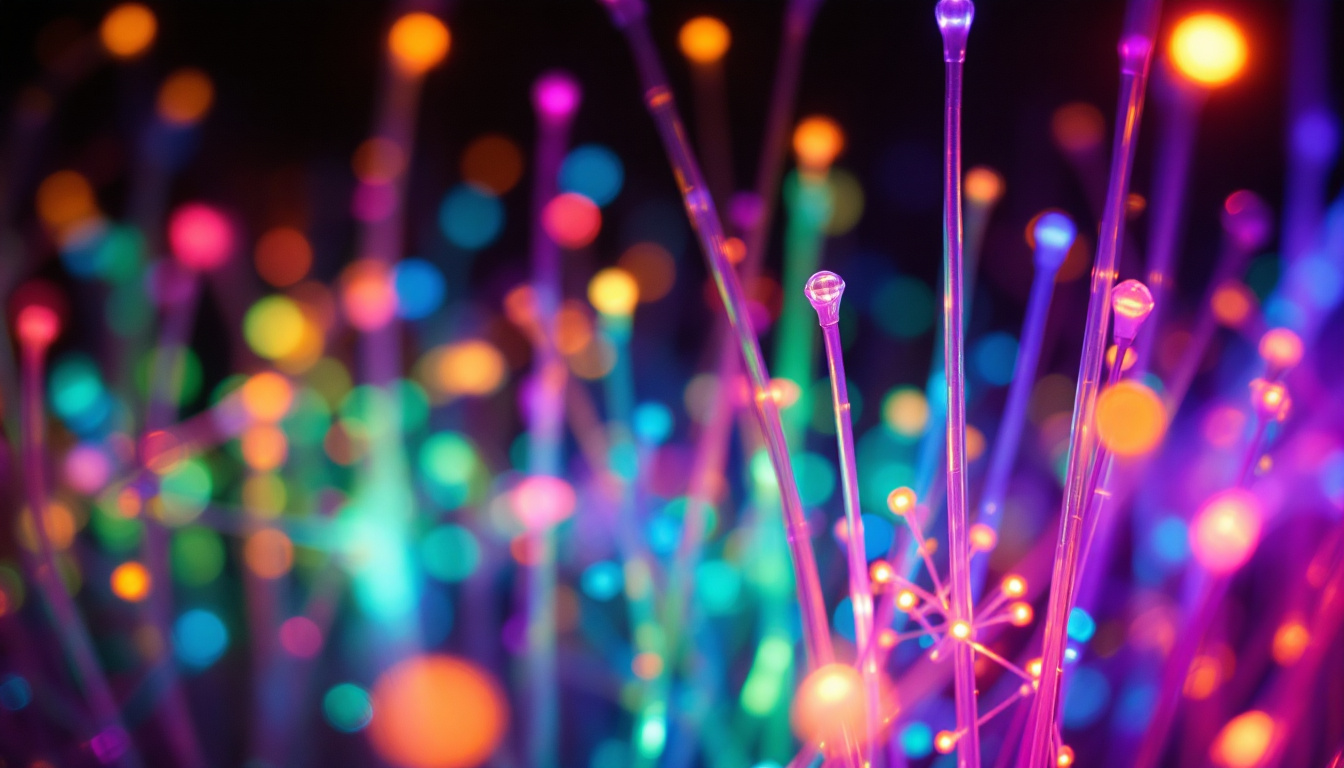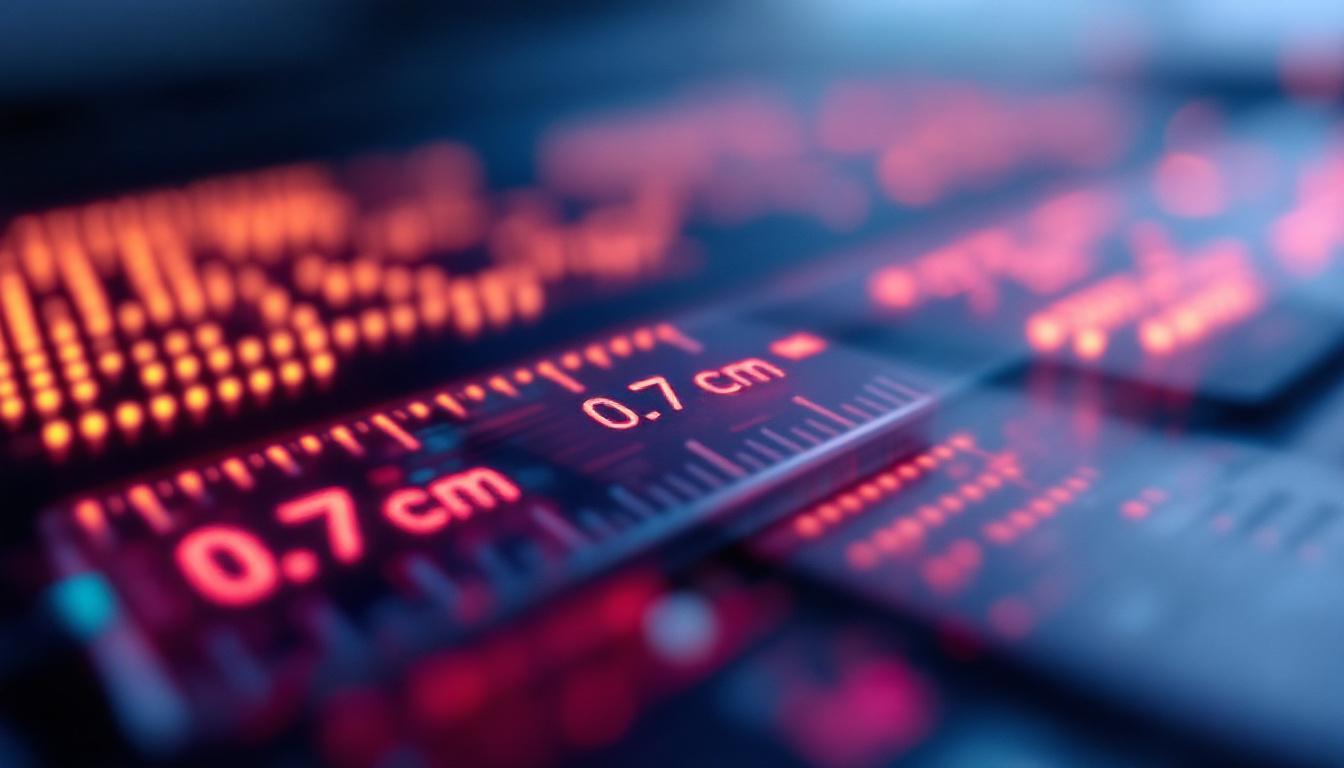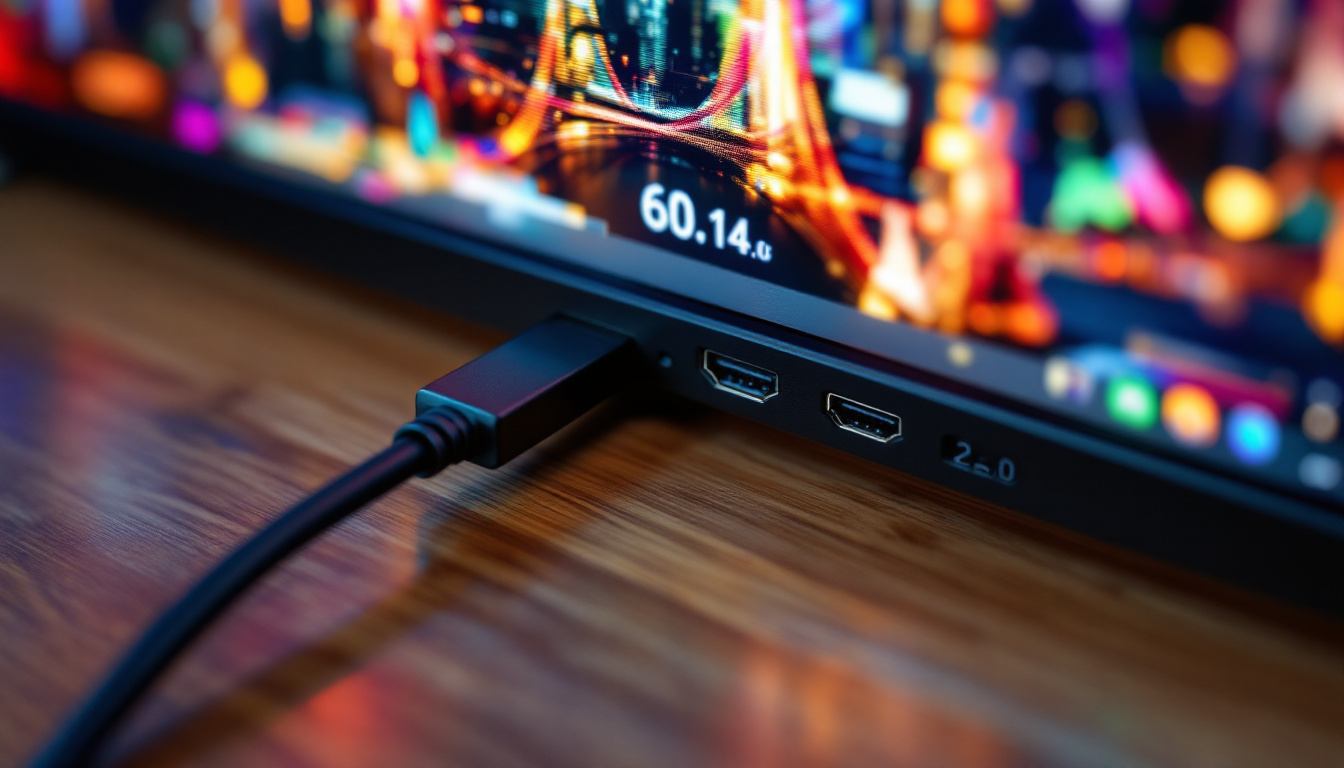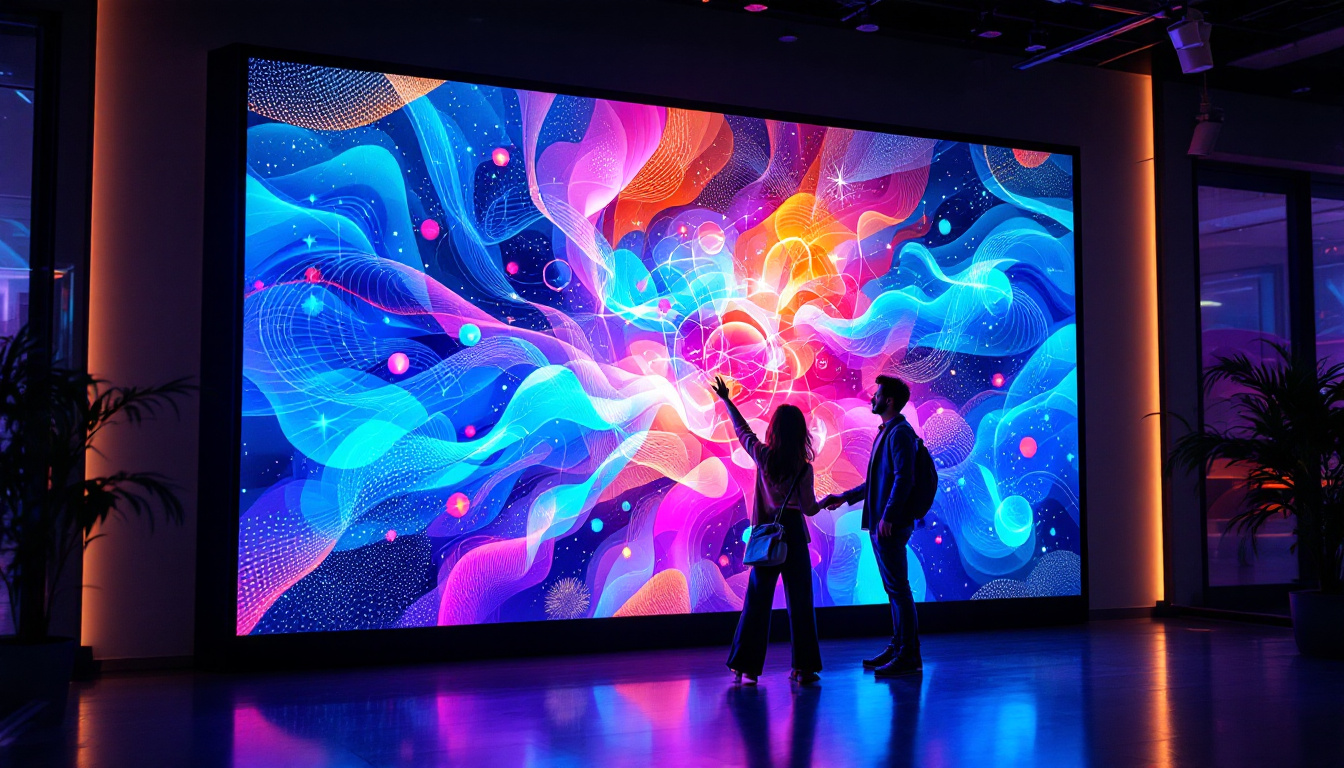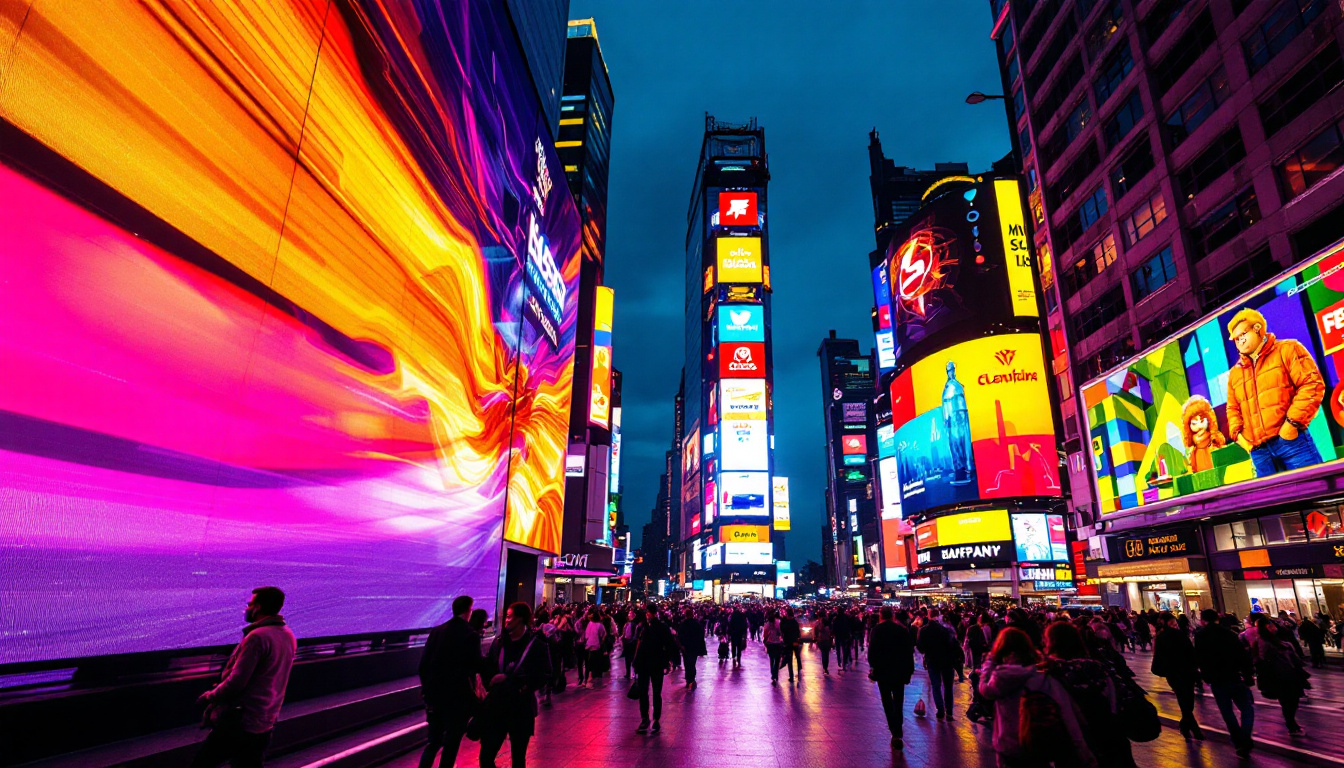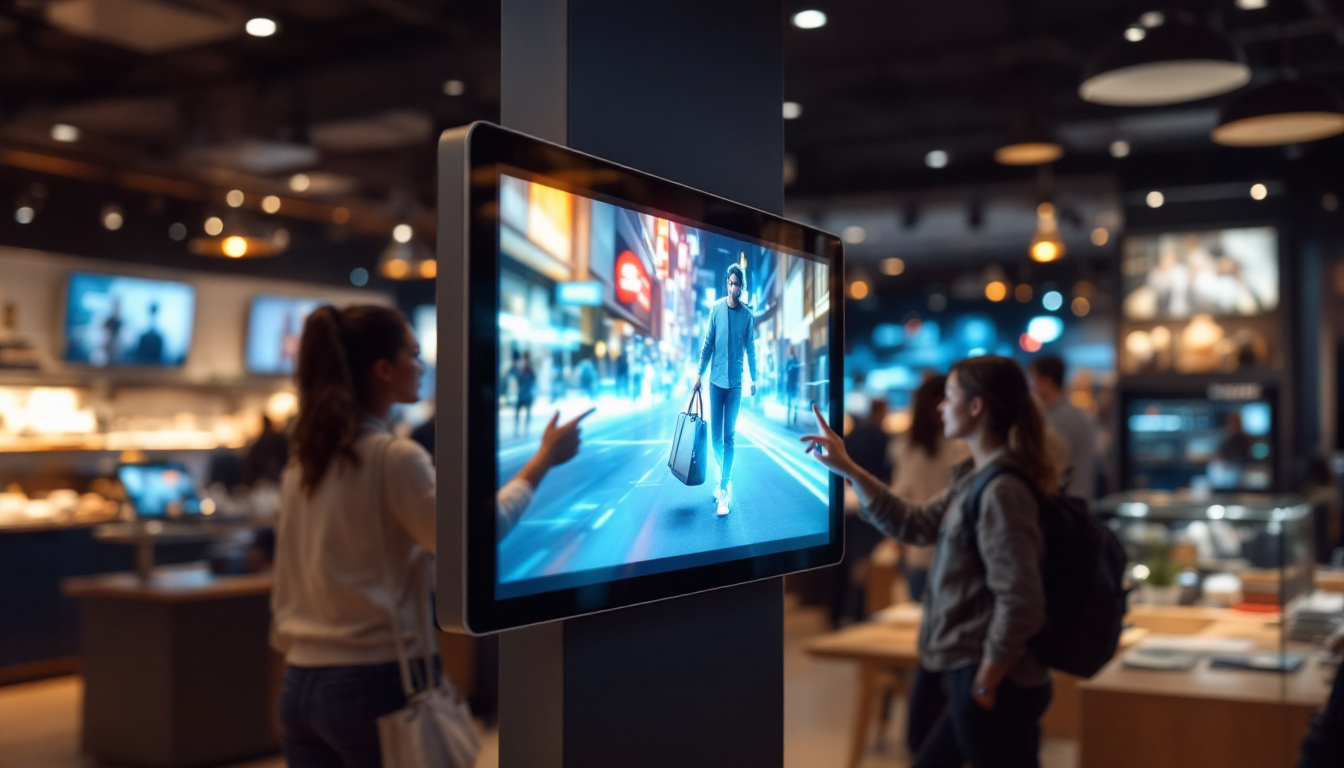What Is An LED Screen: LED Display Explained
In an age where visual communication is paramount, LED screens have emerged as a dominant technology for displaying vibrant images and videos. These displays are not only versatile but also energy-efficient, making them a preferred choice in various applications, from advertising to entertainment. This article delves into the intricacies of LED screens, exploring their technology, types, applications, and advantages.
Understanding LED Technology
LED, or Light Emitting Diode, is a semiconductor device that emits light when an electric current passes through it. This technology is the cornerstone of LED displays, which consist of numerous tiny LED bulbs arranged in a grid format. The brilliance of LED screens lies in their ability to produce bright, colorful images with high contrast and clarity. Unlike traditional lighting methods, LEDs are highly energy-efficient, converting a significant portion of electrical energy into light rather than heat, which contributes to their longevity and reduced environmental impact.
How LED Screens Work
At the core of an LED screen is a matrix of individual LEDs that can emit different colors. Typically, each pixel in an LED display is made up of red, green, and blue (RGB) LEDs. By varying the intensity of these three colors, a wide spectrum of colors can be generated. This process is known as additive color mixing. The precision with which these colors can be controlled is what allows for the vibrant and lifelike images that LED technology is known for.
When an image is displayed, the screen’s controller receives the data and instructs the LEDs to light up in specific patterns. The rapid switching of these lights creates the illusion of a continuous image. This technology allows for high refresh rates, making LED screens ideal for dynamic content such as videos and animations. Additionally, advancements in LED technology have led to improved pixel density, meaning that more pixels can fit into the same screen space, resulting in sharper images and finer details that enhance the viewing experience.
Types of LED Displays
LED displays can be categorized into several types, each designed for specific applications. The most common types include:
- Direct View LED (DVLED): These displays use individual LEDs to create the image directly, providing excellent brightness and color accuracy. They are often used in large outdoor billboards and stadium displays, where visibility from great distances is crucial.
- LED-backlit LCD: This type combines traditional LCD technology with LED backlighting. While not a pure LED display, it offers improved brightness and energy efficiency compared to traditional LCDs. This hybrid approach has made LED-backlit LCDs a popular choice for televisions and computer monitors.
- Organic LED (OLED): OLED screens use organic compounds that emit light when electricity is applied. They offer superior contrast and color reproduction, making them popular in high-end televisions and smartphones. The flexibility of OLED technology also allows for thinner and lighter screens, paving the way for innovative designs in consumer electronics.
Furthermore, the evolution of LED technology has led to the development of MicroLED displays, which consist of microscopic LEDs that can be arranged to form a display without the need for a backlight. This technology promises even greater energy efficiency, improved color accuracy, and the potential for seamless large-scale displays. As the demand for high-quality visual experiences continues to grow, the advancements in LED technology are likely to play a pivotal role in shaping the future of display solutions across various industries.
Applications of LED Screens
LED screens have found their way into numerous industries, transforming the way information is conveyed and experienced. Their versatility allows them to be used in various settings, each with unique requirements.
Advertising and Marketing
One of the most prominent applications of LED screens is in advertising. Digital billboards and signage utilize LED technology to capture the attention of passersby with bright and dynamic content. These displays can easily be updated with new advertisements, allowing businesses to promote their products and services in real-time.
Furthermore, LED screens are increasingly being integrated into retail environments. Stores use them to showcase promotions, product videos, and interactive displays, enhancing the shopping experience and driving sales. The ability to create eye-catching animations and videos helps brands stand out in a crowded marketplace, making LED screens a vital component of modern marketing strategies. Additionally, the use of geolocation technology allows businesses to tailor their messages to specific audiences, ensuring that the content resonates with potential customers in the vicinity.
Entertainment and Events
In the entertainment industry, LED screens play a crucial role in concerts, festivals, and theatrical performances. Large LED video walls can display stunning visuals that complement live performances, creating an immersive experience for the audience. The ability to produce vibrant colors and high contrast makes LED screens ideal for such dynamic environments.
Moreover, sporting events utilize LED screens for scoreboards, instant replays, and fan engagement. These displays enhance the viewing experience for spectators, both in-stadium and at home. Beyond just scores and highlights, LED screens can also feature live social media feeds, allowing fans to see their tweets and posts displayed in real-time, fostering a sense of community and interaction among attendees. This integration of technology not only entertains but also encourages audience participation, making events more memorable.
Corporate and Educational Use
LED screens are also prevalent in corporate settings for presentations, conferences, and training sessions. Their clarity and brightness ensure that information is easily visible to large audiences. Interactive LED displays can facilitate collaboration and engagement during meetings, making them an invaluable tool in modern workplaces.
In educational institutions, LED screens are increasingly being used in classrooms and auditoriums. They provide an engaging medium for teaching, allowing educators to present information in a visually appealing manner. This technology fosters better learning experiences and helps capture students’ attention. Furthermore, with the rise of hybrid learning environments, LED screens can be used to connect in-person and remote learners, displaying content that is accessible to all participants regardless of their location. This adaptability not only enhances the educational experience but also prepares students for a future where digital literacy is essential.
Advantages of LED Screens
The widespread adoption of LED screens can be attributed to the numerous advantages they offer over traditional display technologies. Understanding these benefits can help organizations make informed decisions about their display needs.
Energy Efficiency
One of the most significant advantages of LED screens is their energy efficiency. Compared to traditional displays, such as CRT or LCD, LED technology consumes less power while delivering superior brightness. This efficiency not only reduces electricity costs but also contributes to a smaller carbon footprint, making LED screens an environmentally friendly choice.
Longevity and Durability
LED screens are known for their longevity. With a lifespan of up to 100,000 hours, they outlast many other display technologies. This durability makes them ideal for outdoor applications, where they are exposed to harsh weather conditions. Additionally, LED screens are less prone to damage from impacts, making them suitable for high-traffic areas.
High-Quality Visuals
The visual quality of LED screens is another compelling advantage. They offer high brightness levels, vibrant colors, and excellent contrast ratios, ensuring that content is displayed with clarity and detail. This quality is particularly important in environments where visibility is crucial, such as outdoor advertising or live events.
Challenges and Considerations
While LED screens offer numerous benefits, there are also challenges and considerations that potential users should be aware of. Understanding these factors can help in making the right choice for specific applications.
Initial Cost
One of the primary challenges associated with LED screens is their initial cost. High-quality LED displays can be expensive to purchase and install, which may deter some organizations from investing in this technology. However, it is essential to consider the long-term savings associated with energy efficiency and reduced maintenance costs.
Viewing Angles and Distance
Another consideration is the viewing angle and distance. While LED screens offer excellent brightness and color reproduction, the quality of the image can vary depending on the viewer’s position. For large displays, it is crucial to select the appropriate pixel pitch to ensure that the image remains clear from various distances.
Future of LED Technology
The future of LED technology looks promising, with ongoing advancements that continue to enhance its capabilities. Innovations in manufacturing processes and materials are leading to even more efficient and high-quality displays.
MicroLED and MiniLED
Emerging technologies such as MicroLED and MiniLED are set to revolutionize the display market. MicroLED technology utilizes microscopic LEDs to create individual pixels, offering exceptional brightness and contrast while maintaining a thin profile. This technology has the potential to deliver superior image quality and energy efficiency.
MiniLED, on the other hand, enhances traditional LCD displays by using smaller LEDs for backlighting. This approach allows for better local dimming and improved contrast ratios, bridging the gap between LCD and OLED technologies.
Integration with Smart Technology
As smart technology continues to evolve, LED screens are increasingly being integrated with smart systems. This integration allows for features such as remote control, content management, and interactive capabilities. Smart LED displays can adapt to their environment, adjusting brightness based on ambient light and providing a more tailored user experience.
Conclusion
LED screens have transformed the way visual content is displayed across various industries. Their energy efficiency, longevity, and high-quality visuals make them a preferred choice for applications ranging from advertising to education. As technology continues to advance, the capabilities of LED displays will only improve, paving the way for innovative applications and enhanced user experiences.
Understanding the intricacies of LED technology, its applications, and its advantages can empower organizations to make informed decisions about their display needs. Whether for corporate use, entertainment, or advertising, LED screens are set to remain a vital component of modern visual communication.
Discover LumenMatrix LED Display Solutions
Ready to elevate your visual communication with the latest in LED display technology? LumenMatrix is at the forefront of innovation, offering a wide range of LED display solutions tailored to your needs. From captivating Indoor and Outdoor LED Wall Displays to dynamic Vehicle and Sports LED Displays, our products are designed to enhance brand visibility and engage your audience. Experience the future of digital signage with our Custom, All-in-One, and Transparent LED Displays, and see how our Floor LED Displays can transform any space. Embrace the power of cutting-edge technology and make a lasting impression. Check out LumenMatrix LED Display Solutions today and start creating unforgettable visual experiences.

